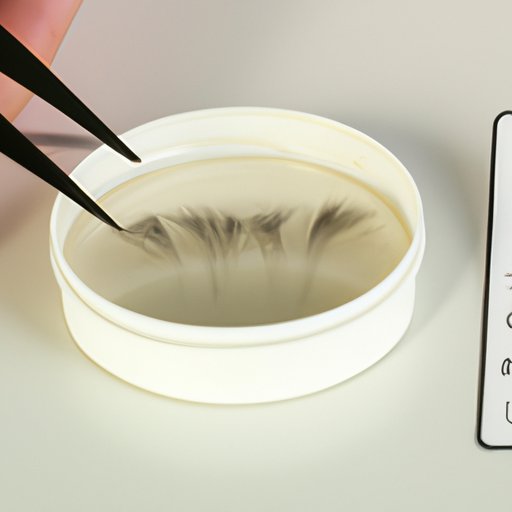Introduction
Testing hair porosity is an important part of understanding how to care for your hair properly. Knowing your hair’s porosity will help you determine what products and techniques are best-suited for your hair type. This article will explore the different ways to test hair porosity and explain what the results mean.
Float Test
The float test is a popular way to test hair porosity. To do the float test, take a few strands of your hair and place them in a bowl of water. Observe how the strands interact with the water. If they float, it means your hair has low porosity. If they sink, it means your hair has high porosity. Low porosity hair generally has tightly bound cuticles that don’t allow moisture to penetrate easily. High porosity hair usually has more open cuticles that allow moisture to enter but also cause it to escape quickly.
Observing the Cuticle Layer
Another way to test hair porosity is to observe the cuticle layer. To do this, look at a strand of hair under a magnifying glass. If the cuticles appear flat and smooth, it indicates low porosity. If the cuticles appear raised and jagged, it indicates high porosity. Low porosity hair is usually resistant to moisture and can be difficult to style. High porosity hair tends to be more prone to damage and frizz.
Strand Test
The strand test is another way to measure hair porosity. To do the strand test, take a few strands of your hair and place them in a bowl of water. Observe how long it takes for the strands to absorb the water. If it takes a long time, it means your hair has low porosity. If it absorbs quickly, it means your hair has high porosity. Low porosity hair usually has tight cuticles that don’t allow moisture to penetrate easily. High porosity hair often has more open cuticles that allow moisture to enter but also cause it to escape quickly.
Elasticity Test
The elasticity test is a simple way to test hair porosity. To do the elasticity test, take a strand of your hair and stretch it out. If it stretches easily and snaps back quickly, it indicates high porosity. If it doesn’t stretch easily or snaps back slowly, it indicates low porosity. High porosity hair tends to be more prone to damage and frizz. Low porosity hair is usually resistant to moisture and can be difficult to style.
Hydration Levels Test
The hydration levels test is a good way to test hair porosity. To do the hydration levels test, take a few strands of your hair and place them in a bowl of water. Observe how much of the water is absorbed by the strands. If the strands absorb a lot of water, it means your hair has high porosity. If the strands absorb very little water, it means your hair has low porosity. High porosity hair often has more open cuticles that allow moisture to enter but also cause it to escape quickly. Low porosity hair usually has tight cuticles that don’t allow moisture to penetrate easily.
Conclusion
Testing hair porosity is an important part of understanding how to care for your hair properly. The float test, observing the cuticle layer, strand test, elasticity test, and hydration levels test are all useful ways to determine your hair’s porosity. Knowing your hair’s porosity will help you choose the right products and techniques for your hair type. With the right knowledge and care, you can enjoy healthy, beautiful hair.


